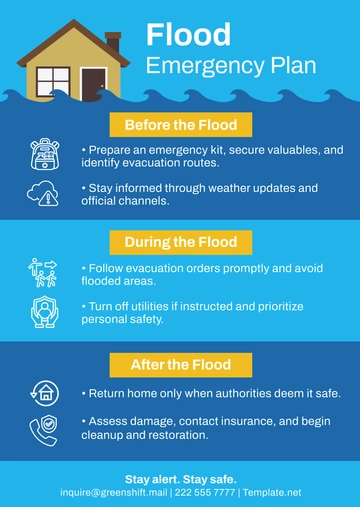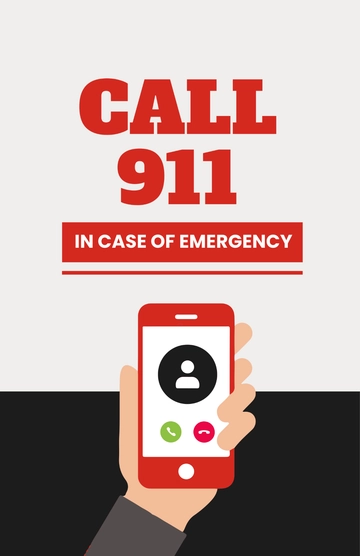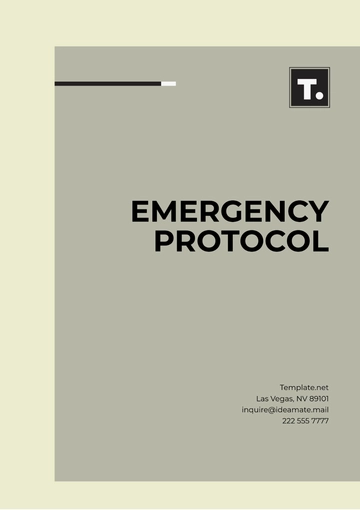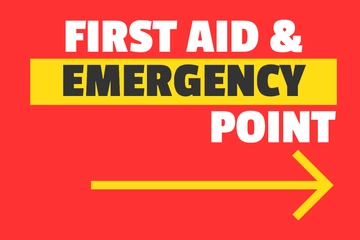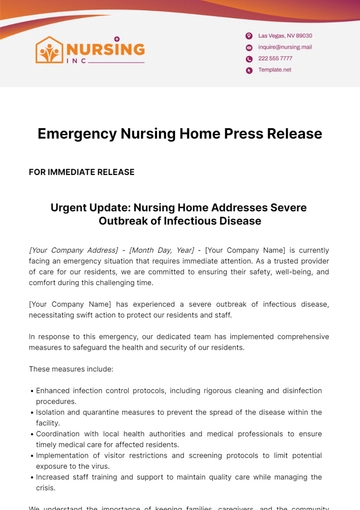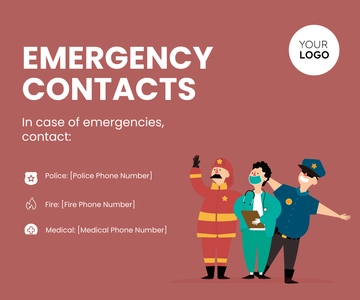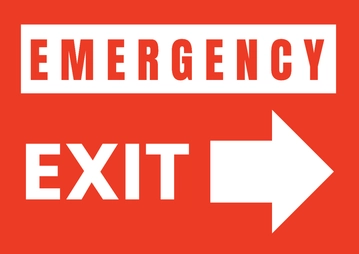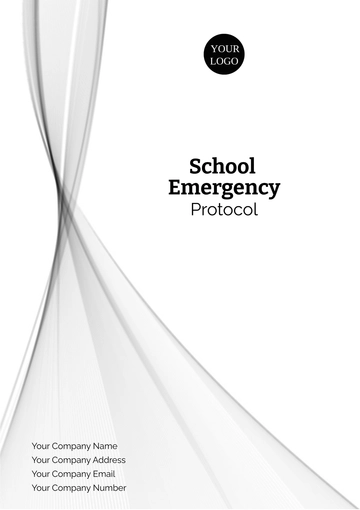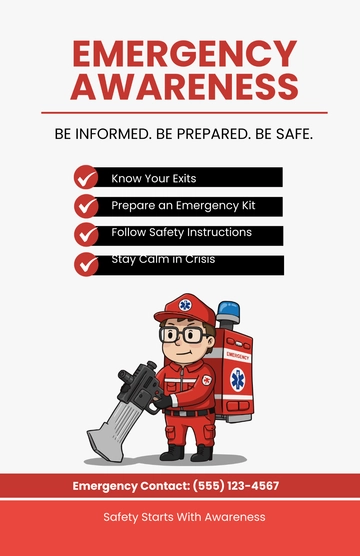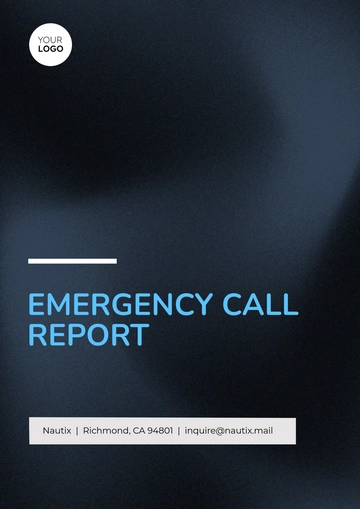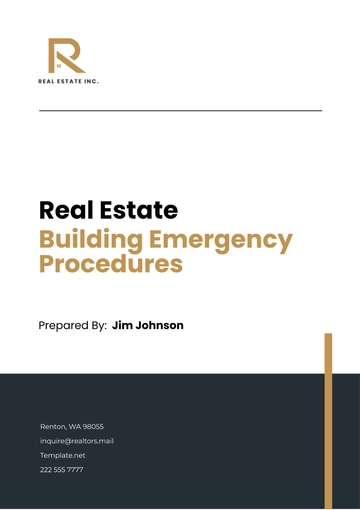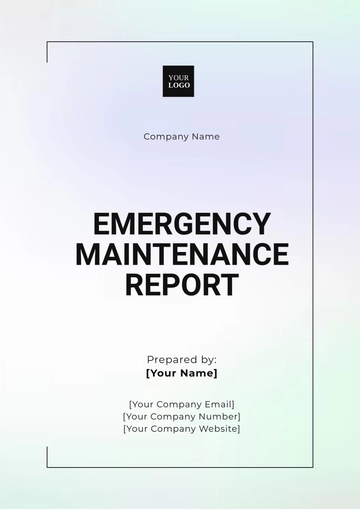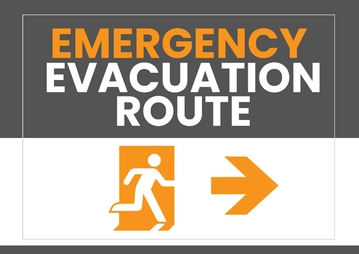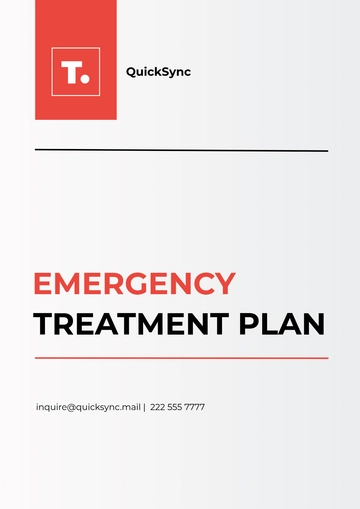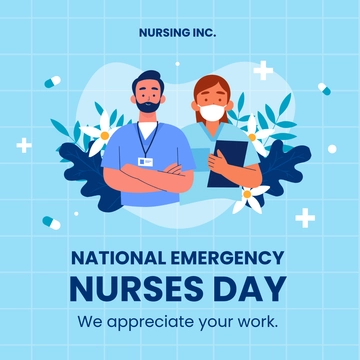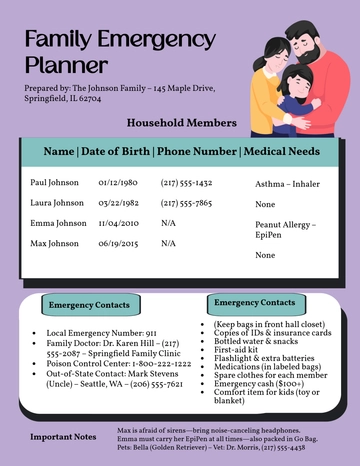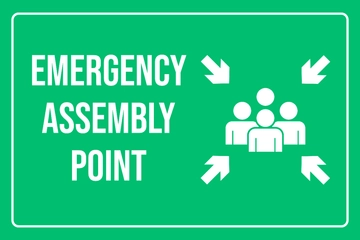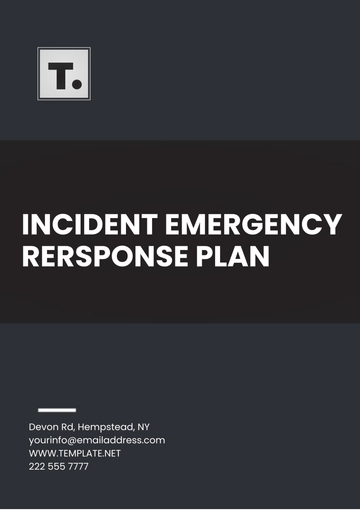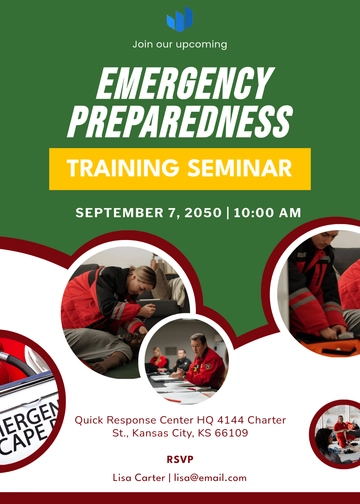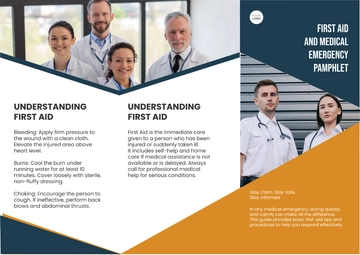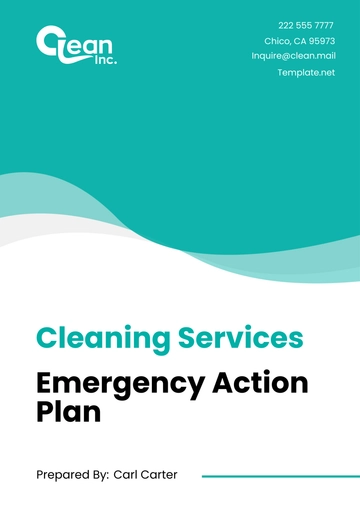Free Emergency Response User Guide
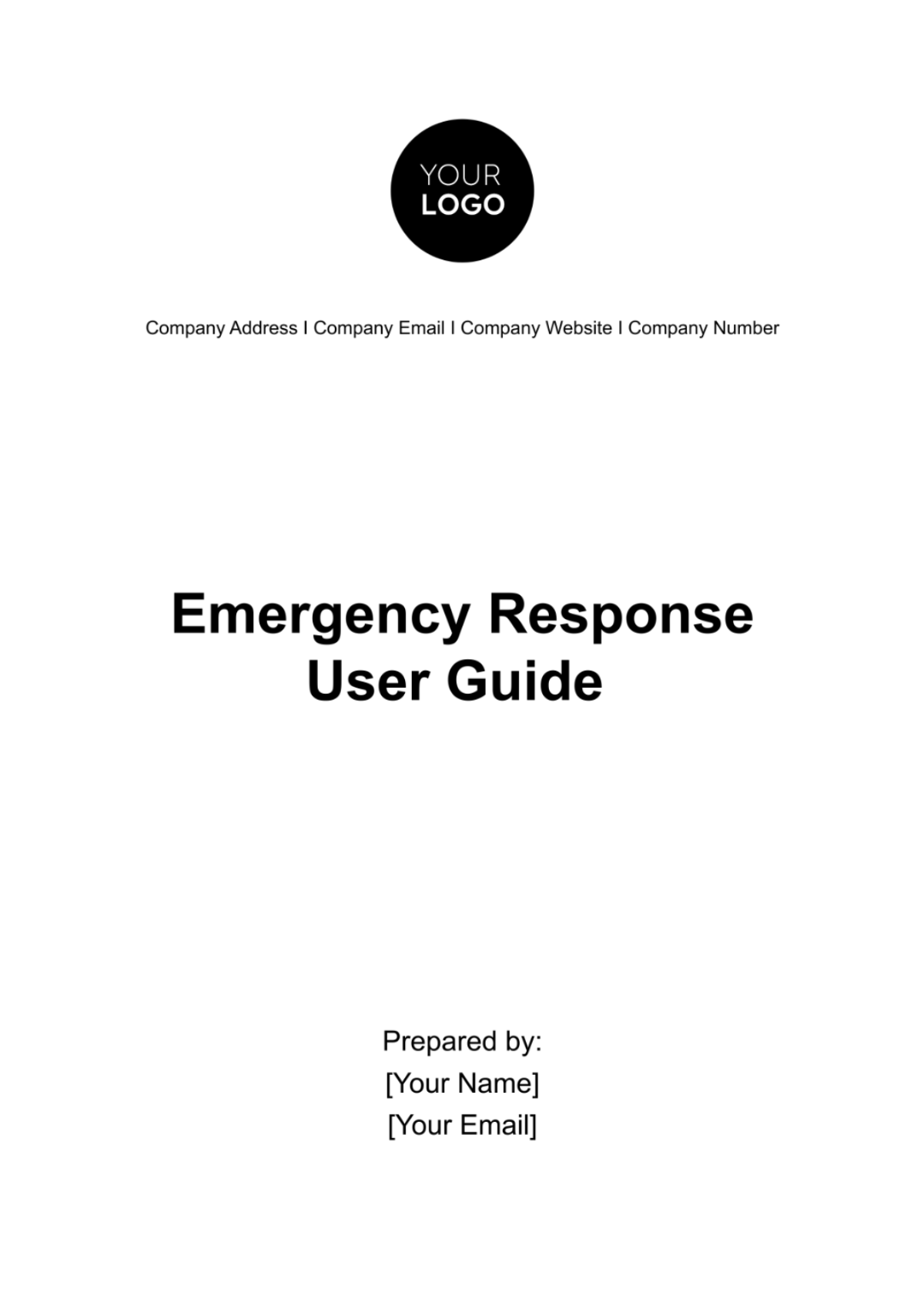
Introduction
Emergency situations demand immediate and effective action to safeguard lives and property. This Emergency Response User Guide is designed to provide comprehensive instructions and protocols to be followed during various emergency scenarios. It covers a wide range of potential emergencies, including natural disasters, medical crises, fire outbreaks, and hazardous material spills. The guide aims to equip all employees with the knowledge and tools necessary to respond effectively to emergencies, minimizing risks and ensuring safety.
Understanding and adhering to this guide is crucial for all staff members. Regular training and refresher courses will be provided to ensure that all employees are familiar with these procedures. Remember, in an emergency, your actions can make a difference in safeguarding your own safety and that of your colleagues.
Emergency Contact Information
Quick access to emergency contact information is vital in any crisis situation. Below is a table detailing key contacts, including emergency services, internal safety officers, and medical personnel. This table should be posted in all common areas and individual workspaces for easy access.
Table 1: Emergency Contact Information
Contact Type | Name/Department | Phone Number | Email Address | Location/Notes |
Internal Safety Officer | [Your Name] | [Your Phone Number] | [Your Email] | [Building A, Room 102] |
Medical Personnel | ||||
Fire Department | ||||
Police Department | ||||
Ambulance Services | ||||
Hazardous Material Response |
Note: For immediate assistance, always dial the universal emergency number 911.
Procedures for Contacting Emergency Services:
In the event of an emergency, assess the situation quickly and dial 911 if immediate assistance is required.
Provide clear and concise information to the operator, including your location, nature of the emergency, and any immediate dangers.
Contact the relevant internal safety officer or medical personnel if the situation is contained and does not require external emergency services.
Follow the instructions of the emergency operator or internal safety personnel until help arrives.
After the situation is under control, file a detailed report with the Health & Safety Department for record-keeping and future reference.
Identification of Emergencies
Note: This table is not exhaustive. Always stay alert to any unusual conditions and report them immediately. The ability to quickly identify the type of emergency is crucial for an effective response. Different emergencies require different responses, and misidentification can lead to improper handling of the situation. Below are some common types of emergencies and their signs:
Table 2: Types of Emergencies and Their Signs
Type of Emergency | Signs & Symptoms | Notes |
Natural Disaster (e.g., earthquake, tornado) | Ground shaking, loud rumbling, severe weather alerts | Stay indoors, away from windows, under sturdy furniture |
Medical Emergency (e.g., heart attack, stroke) | Chest pain, difficulty breathing, sudden dizziness | Call 911 immediately, administer first aid if trained |
Fire | Smoke, flames, burning smell | Activate fire alarm, evacuate the building |
Hazardous Material Spill | Spilled chemicals, strong odors, visible fumes | Avoid the area, notify HAZMAT team |
Evacuation Procedures
In the event of an emergency that requires evacuation, such as a fire or natural disaster, it is important to act quickly and calmly. The following steps outline the evacuation procedure:
Hear the Alarm: Upon hearing the evacuation alarm, stop all work and prepare to leave.
Stay Calm: Keep calm and avoid rushing or shouting, which can cause panic.
Follow the Evacuation Route: Use the designated evacuation routes as shown in the table below. Do not use elevators.
Assist Others: Help those who need assistance, such as individuals with disabilities.
Proceed to Assembly Points: Go to the designated assembly point and stay there until given further instructions.
Account for Personnel: Team leaders should account for all team members at the assembly point.
Table 3: Designated Evacuation Routes and Assembly Points
Floor/Section | Evacuation Route | Assembly Point |
Ground Floor | Main lobby exit towards the north parking lot | North Parking Lot |
First Floor | Staircase A leading to the east wing exit | East Wing Garden |
Second Floor | Staircase B towards the rear emergency exit | Rear Building Courtyard |
Research Lab Wing | Lab corridor exit to the southern fire escape | South Field |
Note: Evacuation maps are posted in each corridor and should be reviewed regularly.
Evacuation Procedures (Continued)
In addition to the initial steps, the following procedures should also be followed during an evacuation:
Leave Belongings Behind: Do not attempt to take personal belongings other than essentials (like wallets, keys, and phones).
Close Doors: Close all doors behind you to prevent the spread of fire and smoke.
Avoid Blocked Routes: If the designated route is blocked or unsafe, use an alternate route.
Do Not Re-enter: Do not re-enter the building until it is declared safe by emergency personnel.
Emergency Assembly Point Guidelines:
Once at the assembly point, follow these guidelines:
Stay clear of emergency services pathways.
Check-in with your designated team leader.
Do not leave the assembly point until all personnel are accounted for.
Follow instructions from emergency coordinators.
First Aid and Medical Emergency Response
In the event of a medical emergency, immediate and appropriate action can be lifesaving. Below are guidelines and a table detailing the location of first aid resources.
Basic First Aid Procedures:
Call for Help: Immediately call 911 or ask someone else to call.
Assess the Situation: Check for responsiveness, breathing, and any obvious injuries.
CPR: If the person is not breathing, perform CPR if trained.
Control Bleeding: If there is bleeding, apply firm pressure with a clean cloth or bandage.
Do Not Move the Injured Person: Unless there is immediate danger, do not move the person.
Stay with the Person: Provide reassurance and stay with the person until medical help arrives.
Handling Specific Medical Emergencies:
Heart Attack: Look for chest pain, shortness of breath, and nausea. Keep the person calm and seated until emergency services arrive.
Stroke: Remember FAST - Face drooping, Arm weakness, Speech difficulty, Time to call 911.
Seizures: Clear the area around the person, do not restrain them, and place something soft under their head.
Table 4: Location of First Aid Kits and Automated External Defibrillators (AEDs)
Location | First Aid Kit | AED | Additional Notes |
Main Lobby | Yes | Yes | Next to the reception desk |
Cafeteria | Yes | No | In the kitchen area, above the sink |
Second Floor - Hallway | No | Yes | Mounted on the wall near the restrooms |
Research Lab Wing | Yes | Yes | In the main lab control room, under the safety board |
Note: First aid training is provided to all employees annually, and participation is highly encouraged.
Fire Safety Procedures
In the event of a fire, it is crucial to respond quickly and correctly to ensure the safety of all personnel. Follow these steps:
Raise the Alarm: Immediately activate the nearest fire alarm pull station.
Call for Help: Dial 911 and inform them of the fire.
Evacuation: Follow the evacuation procedures as outlined in Section 4.
Use Firefighting Equipment (If Trained): If the fire is small and manageable, use a fire extinguisher to douse it, but only if you are trained and it is safe to do so.
Use of Firefighting Equipment:
Fire Extinguishers: Suitable for small, contained fires. Use the PASS technique - Pull, Aim, Squeeze, and Sweep.
Fire Blankets: Can be used to smother small fires or wrap around a person whose clothes are on fire.
Table 5: Location of Fire Extinguishers and Fire Alarms
Location | Fire Extinguisher | Fire Alarm Panel | Additional Notes |
Main Lobby | Yes | Yes | Near the main entrance, next to the security desk |
Cafeteria | Yes | Yes | On the wall near the kitchen exit |
Second Floor - Hallway | Yes | Yes | Adjacent to the elevator |
Research Lab Wing | Yes | Yes | Next to each emergency exit |
Note: Fire safety training is mandatory for all employees and is conducted biannually.
Handling Hazardous Material Spills
The proper handling of hazardous material spills is critical to prevent injury and environmental damage. The following steps should be taken:
Identify the Hazard: Check the material’s safety data sheet (SDS) for specific handling instructions.
Evacuate the Area: If the spill is significant or dangerous, evacuate the area immediately.
Notify the HAZMAT Team: Contact the internal hazardous material response team or dial 911 for larger spills.
Containment: If trained and it is safe, try to contain the spill using spill kits.
Procedures for Minor and Major Spills:
Minor Spills: Small spills without significant risk can be handled by trained staff using appropriate PPE (Personal Protective Equipment).
Major Spills: These require immediate evacuation and professional cleanup by a HAZMAT team.
Table 6: Emergency Kits and Their Locations
Location | Spill Kit Type | PPE Available | Additional Notes |
Research Lab Wing | Chemical | Yes | Under the lab benches, marked with signs |
Maintenance Workshop | Universal | Yes | Next to the tool storage area |
Storage Room B | Biological | Yes | In the corner, beside the safety shower |
Main Lobby | General | No | In the janitorial closet |
Note: Training for handling hazardous materials is provided annually, and attendance is mandatory for relevant staff.
Communication During Emergencies
Effective communication is key during any emergency. The following protocols should be followed to ensure timely and accurate information dissemination:
Internal Communication: Use the internal communication system (intercom, emails, or emergency text alerts) to inform staff of the emergency and provide instructions.
External Communication: The designated spokesperson should handle all communication with external parties, including media, families of employees, and emergency services.
Emergency Alert System: This system will be activated in case of a major emergency to provide real-time updates and instructions.
Use of Emergency Alert Systems:
Audio Alerts: Used for immediate dangers, such as fires or lockdowns.
Text Alerts: For ongoing situations, updates, and all-clear notifications.
Training and Drills
Regular training and drills are essential for preparing staff to handle emergencies effectively. The following table outlines the schedule and types of training and drills:
Table 7: Schedule for Upcoming Drills and Trainings
Date | Type of Drill/Training | Location | Notes |
March 15, 2050 | Fire Drill | Entire Building | Focus on evacuation procedures |
June 10, 2050 | First Aid Training | Conference Room B | CPR, wound care, emergency response |
September 5, 2050 | Earthquake Drill | Entire Building | Practice "Drop, Cover, and Hold On" method |
December 12, 2050 | HAZMAT Training | Lab Wing | Handling and cleanup of chemical spills |
Note: Participation in all drills and training sessions is mandatory for all employees.
Conclusion
This Emergency Response User Guide is a comprehensive resource designed to prepare all employees for a variety of emergency situations. Familiarity with this guide and regular participation in training and drills are crucial for ensuring personal safety and the well-being of colleagues. Always remember, in an emergency, your actions can make a significant difference. Stay alert, stay informed, and stay safe.
- 100% Customizable, free editor
- Access 1 Million+ Templates, photo’s & graphics
- Download or share as a template
- Click and replace photos, graphics, text, backgrounds
- Resize, crop, AI write & more
- Access advanced editor
Navigate emergency situations effectively with Template.net's Emergency Response User Guide Template. This editable and customizable guide offers comprehensive instructions for swift action. Tailor content effortlessly with our Ai Editor Tool, ensuring it fits your specific needs. Trust Template.net for reliable solutions in emergency preparedness and response.
